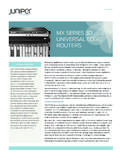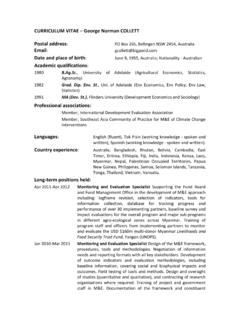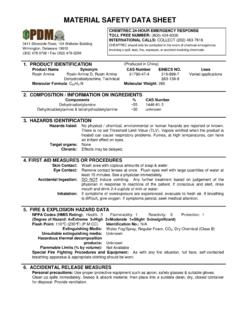Transcription of APICS Executive Briefing
1 APICS Executive Briefing : demand forecasting & Inventory Planning for Manufacturers & Distributors by John A. Estep, E/Step Software Inc. Introduction These two closely-related subjects contain the solutions to many expensive problems encountered by manufacturers and distributors problems that executives, managers, and practitioners often believe have no solution. But forecasting and inventory planning are a science, not an art, and a little knowledge of this science can pay big dividends in terms of improved service and reduced inventory and expediting. Without this knowledge, executives and managers cannot hope to guide their people to achieve superior results. The good news is: one does not need to be a statistician or an engineer to understand the general principles of this science. This presentation provides an overview of the concepts and relationships, linking them to typical operational problems and reviewing solution alternatives.
2 We all know what demand forecasting is but bear in mind that Inventory Planning means figuring out what your inventory should be (not just counting what you have). This is an Executive Briefing . That means we will stay at a high conceptual level with almost no formulas. Forecasters and inventory analysts probably have more power to alter their employer's fortunes for good or ill than just about anyone else in the Operations Management area, or even, perhaps, in any area of the organization. Yet this is seldom recognized by others, and that, unfortunately, often includes their own management. So I hope to shed some light on this critical corporate function and perhaps to dispel some myths along the way. Why demand forecasting & Inventory Planning? Are you in a purely make-to-order environment where your customers are willing to wait your full lead time (and that includes your suppliers' lead times too) for all of your products including any service parts?
3 If so, this material does not apply to you. If not, then you have no choice you must forecast your demand and plan your inventory (and perhaps also your expediting). Applicability Let's look at three examples as a way of gauging applicability. Service: The service parts operation of a Chicago-area food machinery manufacturer came to us concerned about their service levels. We did a study of a sample of their parts and showed them that we could cut their inventory by a third and raise service to 99%. While we were at it, we also showed them that with their current aggregate inventory they could achieve 100% service. And that's what they decided to do. They removed the inventory where they had too much and plowed it all back into other SKUs where they needed more. Their service promptly climbed right up to 100% on the same aggregate inventory with which they started. Wouldn't you just love to be one of their customers?
4 What a commitment to service! Let's think about this for a minute, however. Two thirds of their current inventory could achieve 99%. service. It then took the entire remaining third to get to 100%. Looking at it from a different perspective, however, if they had that two thirds of their current inventory, correctly allocated, and were achieving 99% service, by how much would they then have to increase inventory to get to 100% service? In that case the basis has changed, so for them to go from 99% service to 100% service would require a 50%. increase in inventory! Why is that last 1% of service so expensive? We will cover that shortly. Inventory: Another company, a provider of jet engine service parts, said their service wasn't bad but they thought the inventory required to reach it was questionable. Plus they wanted to improve the Executive Briefing on demand forecasting & Inventory Planning Page 2. productivity of their forecasters.
5 Again we did a study, the results of which exactly matched the results of their subsequent implementation, which was that they raised service slightly while cutting inventory 30%. That 30% inventory reduction was over $300 million of unnecessary inventory which they eliminated over a 2 year period. Their return on investment took a noticeable leap. And during the project they cut their planning headcount 30%. [1]. Inventory and Service: Lastly, a fastener manufacturer in the Boston area questioned both their inventory and service levels. This company had significant seasonality in half of their SKUs. After we educated them and they implemented our software, they raised their service dramatically to their 95%. target and slashed inventory by 75%. Before beginning they had 4 times as much inventory as they needed! (I'll address how that's possible a bit later in the Briefing .) This company occupied two buildings across a street from each other.
6 One was a combined factory and warehouse. The other was strictly a warehouse. They sold the warehouse and converted half of the remaining warehouse space in the factory to production space. When I visited them a few months later they had a huge banner stretching across the entire wall in the planning department that said, Don't buy anything! . The science we will be discussing is applicable to a wide range of industries. We've applied it to everything from jet engine service parts to panty hose; from hamburgers to hot sauce to oilfield chemicals; in the following general categories: 1. Process Manufacturers 2. Discrete/Repetitive Manufacturers 3. Service Parts Manufacturers 4. Distributors of products from the above 5. Overhaul/Service shops 6. Electrical Utilities Essentially this science is applicable to any business with an inventory to manage. Let me draw particular attention to service parts which, as it turns out, is the toughest business to forecast primarily because of the large forecasting errors (due to sparse demand ) but also because of long lead times.
7 E/Step Software Inc. Overview E/Step Software was founded in 1983 to take advantage of the then-new IBM Personal Computer in addressing the problems inherent in transaction-processing based planning systems, which is, that they ignore the analytical front-end functions of demand forecasting and Inventory Planning which are so critical to success. In our increasingly complex yet, paradoxically, increasingly math-phobic society, solving these problems requires high-level statistical tools that can be used by ordinary planners (who are not statisticians). Our software is called the Finished Goods Series, or FGS. It embodies the science of demand forecasting and inventory planning. Our people have degrees in mathematics and engineering, plus a combined experience of over 100 years in the industry. Our first few clients were service parts companies; including GE Transportation's locomotive service parts operations which began working with us in 1984.
8 So we did the research to extend this science and we developed a number of tools specifically for the service parts industry. We were subsequently surprised to discover that the same tools used differently were also quite helpful to other industries. We have clients in North, South, and Central America, Europe, Asia, and Australia. Our clients make FGS. the front end to their ERP/WMS/OSB and/or Supply Chain systems. Copyright 2016 E/Step Software Inc. All rights reserved. Executive Briefing on demand forecasting & Inventory Planning Page 3. Benefits We educate our clients in the science of demand forecasting and inventory planning and provide them with the software tools which enable them to achieve the following benefits: 1. Raise forecast accuracy 2. Increase customer service to their targets 3. Reduce inventory by 30 to 50%. 4. Reduce expediting 5. Reduce setups or receiving 6. Raise forecaster/inventory analyst productivity Principal Functional Areas The goal of demand forecasting is to predict what products your customers want, where they want them, when they want them, and how much they want without regard for your ability to meet that demand .
9 Inventory Planning tells you where you need inventory and where you don't. It manages the tradeoff between service, expediting, and inventory. Essentially it's a price list for service (by part by location) . something very few companies have ever had. Or, if the squeeze is on return on investment (ROI), given an inventory budget, Inventory Planning will tell you what service you can afford (and how often you will need to expedite). With a demand forecast and an inventory plan in place, Replenishment Planning creates a replenishment plan that meets both the demand forecast and inventory plan, takes into consideration what you have on hand, what you already have on order, and makes it all happen despite real-world constraints, such as the need to fill containers, to plan around Chinese New Year, or to send a truck out on a regular multi-day route that stops at several vendors to pick up material, among other constraints.
10 For companies with multiple satellite warehouses, Distribution Planning ensures that stock distributed to a satellite warehouse meets each its demand forecast and inventory plan, while also ensuring that each satellite gets its fair share of the total available inventory. Science, not Art (or Fad). forecasting & Inventory Planning are a science, not an art or a fad or even a matter of opinion. As with any science there are concepts and relationships to learn. For example, there is a relationship between service and inventory; but it's more complex than that as lead time, replenishment frequency, forecast error and error distribution plus some others are all involved as well. If you master these concepts and relationships, you can put them to work for you, making your work easier and raising your ROI. But if you are unaware of them or ignore them or even do them almost correctly they will make your work very difficult, if not impossible.





